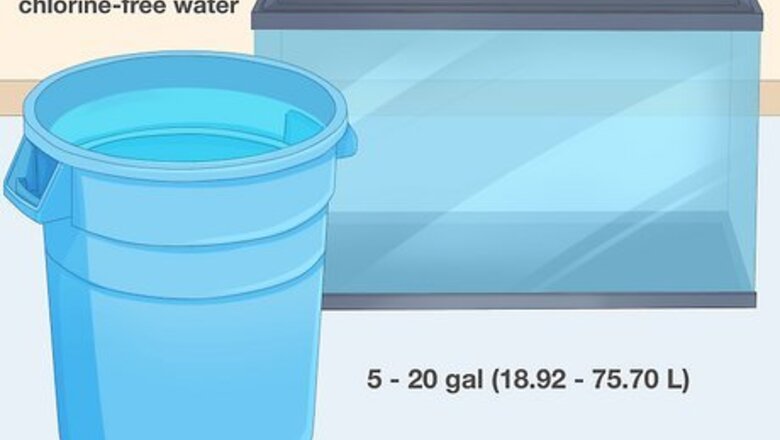
views
X
Research source
Setting up the Habitat
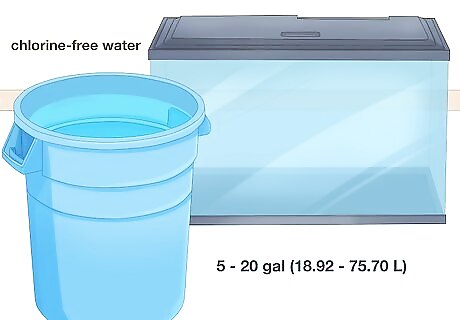
Fill a container with chlorine-free water. Use a five to twenty-gallon (18.92 - 75.70 l) plastic tub or aquarium to house your Daphnia cultures. Daphnia will die in tap water because of the chlorine that it often contains. If you have an existing aquarium, use the water from the aquarium instead. You can also use distilled water. It’s easier to monitor and watch your Daphnia if you use a glass aquarium.

Treat chlorinated water with a de-chlorinator. You can purchase de-chlorinator online or at a pet shop. Read the instructions on the back of the packaging and add the appropriate amount of chemical to the water. Let the solution sit in the water for 30 minutes, then proceed with the next steps.
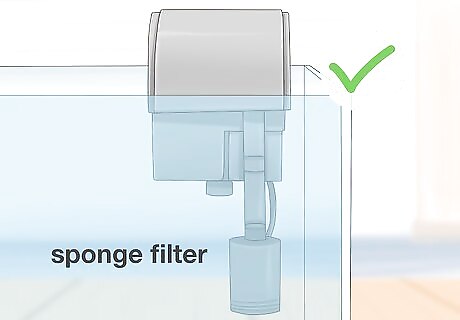
Install a bubbler line or sponge filter in the tank. Don't use an airstone or mechanical filter, as small bubbles can cause buoyancy problems in daphnia, and mechanical filters can crush them. Use the lowest air setting to keep the water relatively calm.
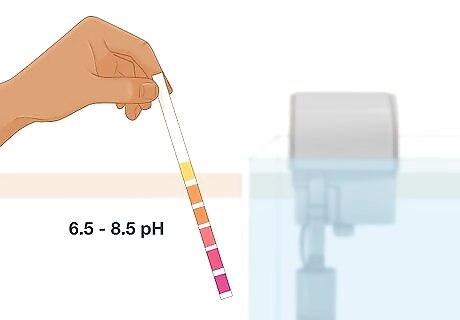
Aim for a pH level between 6.5 to 8.5. If the pH level of your water is too high or low, boil it to give it a neutral pH level. You can also used distilled water to reset the pH level to neutral. Most water is around 7 pH.
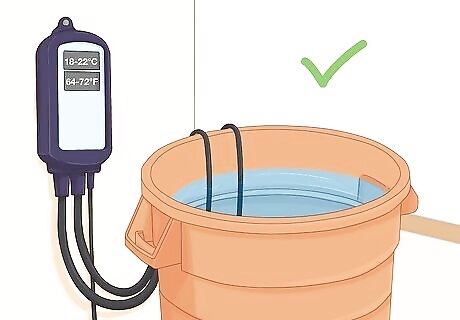
Keep the water temperature between 18-22°C (64-72°F). Daphnia cultures prefer cooler climates, so leave them in a cooler place like a basement or garage. If you are keeping the Daphnia cultures outside, make sure it doesn’t go above 22°C (72°F) or it will prevent the Daphnia from reproducing.

Consider setting up more than one culture. Having multiple tanks with different cultures will ensure that if one culture dies you’ll have a backup. Set up to three different tanks to house your Daphnia cultures.
Adding Daphnia to the Tank
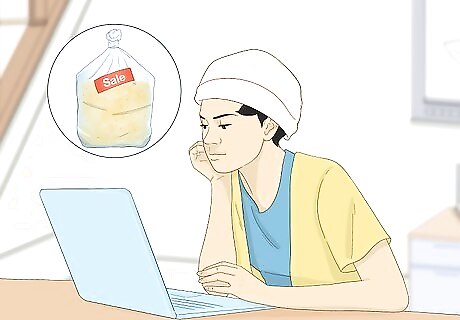
Purchase the Daphnia online or at a pet store. If you buy your Daphnia online, they will usually be shipped to you within a day or two. Be careful when opening the packaging so that you don’t accidentally puncture the bags that they come in. You can start a culture with around 30-40 Daphnia per container. The water that the Daphnia comes in will be yellow.
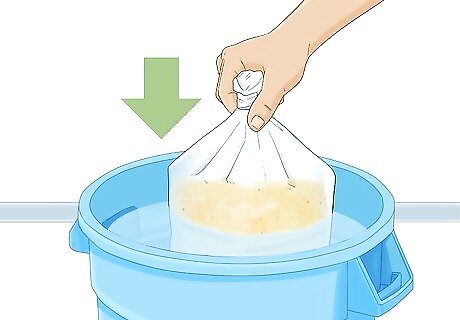
Submerge the bag into the water. Place the container or bag that the Daphnia arrived in into the water for around 30 minutes so that they can become acclimated to the temperature of the water.
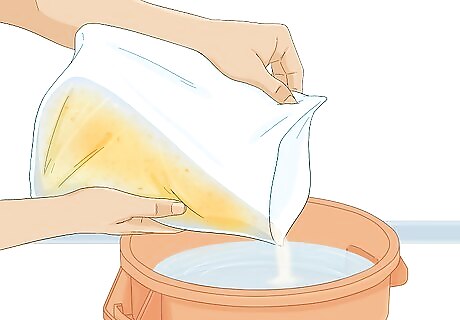
Pour the Daphnia into the water. Open up the bag or container that the Daphnia came in and carefully pour them into your tank or container.
Caring for the Daphnia
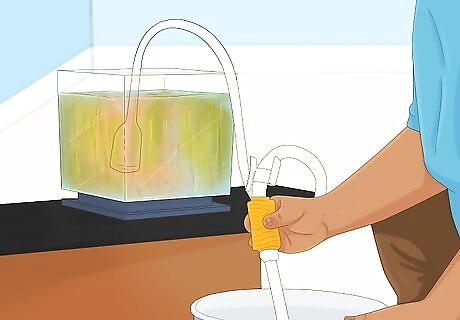
Change 10-20% of the water every week. Remember that you shouldn’t use regular tap water when changing the water because it contains chlorine. You can use the old water from an existing aquarium or you can dechlorinated tap water. Drain 10-20% of the water from the container and replace it with the new water.
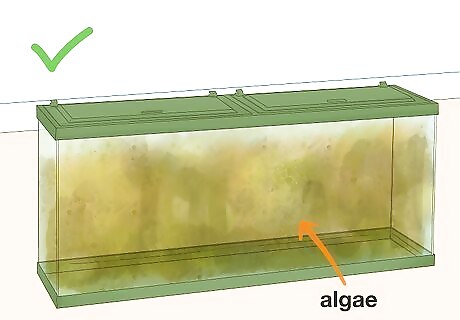
Use green water high in algae. Daphnia thrive in green water that has algae, so don't remove it if it starts to form in your container or tank. The Daphnia will feed off the algae in the water and can use it as a food source. If you want to create your own green water, you can do so by leaving a bin filled with water and a handful of grass clippings uncovered for several days. Plant fertilizer can also create green algae filled water.
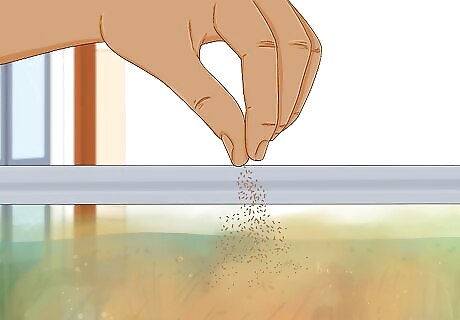
Feed the Daphnia one to three pinches of active yeast per day. You can purchase active yeast online or at a grocery store. When you add the yeast to the water, it will become cloudy.

Examine the clarity of the water the next day. The water should be clear the next day. If it’s cloudy, it’s an indication that you’re feeding them too much. Lower the amount of yeast you feed the Daphnia. If the water clears up before the 24 hours is over, it means that you need to feed the Daphnia more. Adjust the food levels until they eat all of the yeast over a 24 hour period.
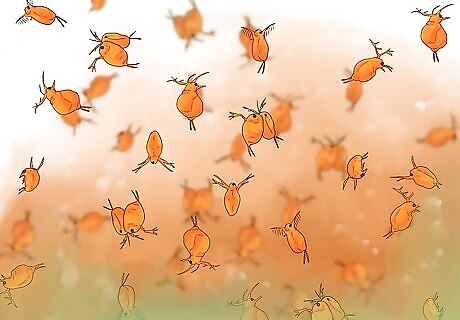
Monitor the health of your Daphnia cultures every day. Daphnia communities can die off from temperature changes, overfeeding, or overcrowding. Avoid changing their environment drastically and monitor the tank to make sure you are feeding them enough. If you notice that Daphnia are becoming overcrowded, harvest them more regularly.
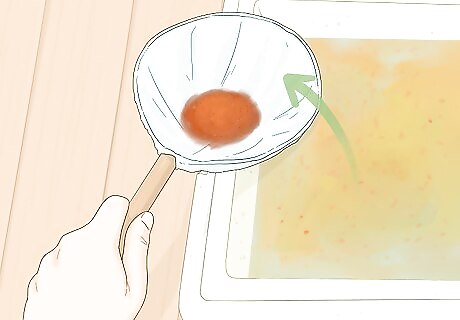
Harvest 1/4 of the Daphnia after a week and a half. If your culture is strong, you can harvest 1/4 of the Daphnia population. Use a net that has holes large enough to let the baby Daphnia slip through, but small enough to catch the adults. Examine the Daphnia population before harvesting. If you notice they aren't reproducing as fast as usual, delay the harvesting so their numbers can rise. A healthy Daphnia culture can be harvested daily or every other day once it's stable depending on the size of the population.


















Comments
0 comment